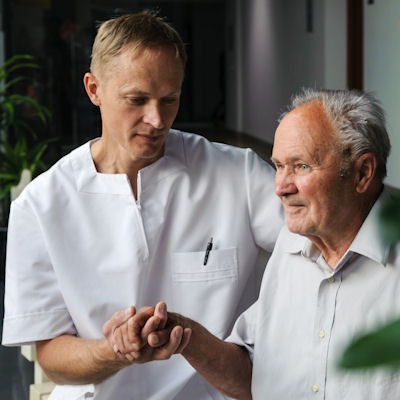
At least one radiology department is not letting language barriers get in the way of timely MRI scans. Researchers in Michigan found no significant difference in wait times between patients who spoke English and those who didn't, according to a study published online July 26 in the Journal of the American College of Radiology.
Lead author Dr. Edward Sutherland and colleagues in the departments of diagnostic radiology and internal medicine at William Beaumont Hospital in Royal Oak cited many other reasons for MRI scan delays that don't involve a patient's English proficiency.
"Inability of the patient to answer the safety screening questions reliably due to dementia or altered mental status, initial failure of safety screening requiring additional imaging or tests, high MRI patient volume, and additional clinical and logistical factors in arranging the MRI can all increase the time it takes to obtain an MRI," they wrote (JACR, July 26, 2018).
The number of people in the U.S. with limited English skills is projected to reach more than 70 million in the next decade. Faced with that prospect, clinicians will need to be increasingly mindful of patients who find it difficult to express their ills or fears.
To gauge the current state of how language-related issues affect radiology workflow, Sutherland and colleagues retrospectively analyzed 24,219 patients (mean age of 64.8 ± 17.2 years) who underwent inpatient neurological MRI scans at one of three Beaumont imaging facilities.
The researchers found the median wait time for patients who preferred to speak a language other than English was 751 minutes, compared with a median of 674 minutes for English-speaking patients. The 77-minute (12%) difference was longer on a statistically significantly basis (p = 0.001).
However, when researchers accounted for patients' age and scan priority, the difference in median time to scan decreased to 4%, a difference that was not statistically significant (p = 0.23).
"The magnitude of the time-to-exam difference due to preferred language was the same for routine and immediate priority orders," the authors added. "In other words, the effect of preferred language on time to exam was not different for emergent MRIs when compared with routine MRIs."
The two variables that contributed most significantly to a difference in overall time to exam were the urgency of the MRI and a patient's age. Patients who preferred to speak in their native language tended to be older than 70 years of age, while younger patients more often opted for English.
| Impact of patient factors on time to MRI scan | |||||
| Routine MRI | Priority MRI | Age: 18-50 years | Age: 71-80 years | Age: 81+ years | |
| Median time to MRI | 924 min | 394 min | 583 min | 712 min | 741 min |
| p-value* | < 0.0001 | < 0.0001 | |||
"This finding supports the effectiveness of the protocols and resources in place to support patients with limited English proficiency at the sponsoring health system," Sutherland and colleagues concluded.



.fFmgij6Hin.png?auto=compress%2Cformat&fit=crop&h=100&q=70&w=100)




.fFmgij6Hin.png?auto=compress%2Cformat&fit=crop&h=167&q=70&w=250)











